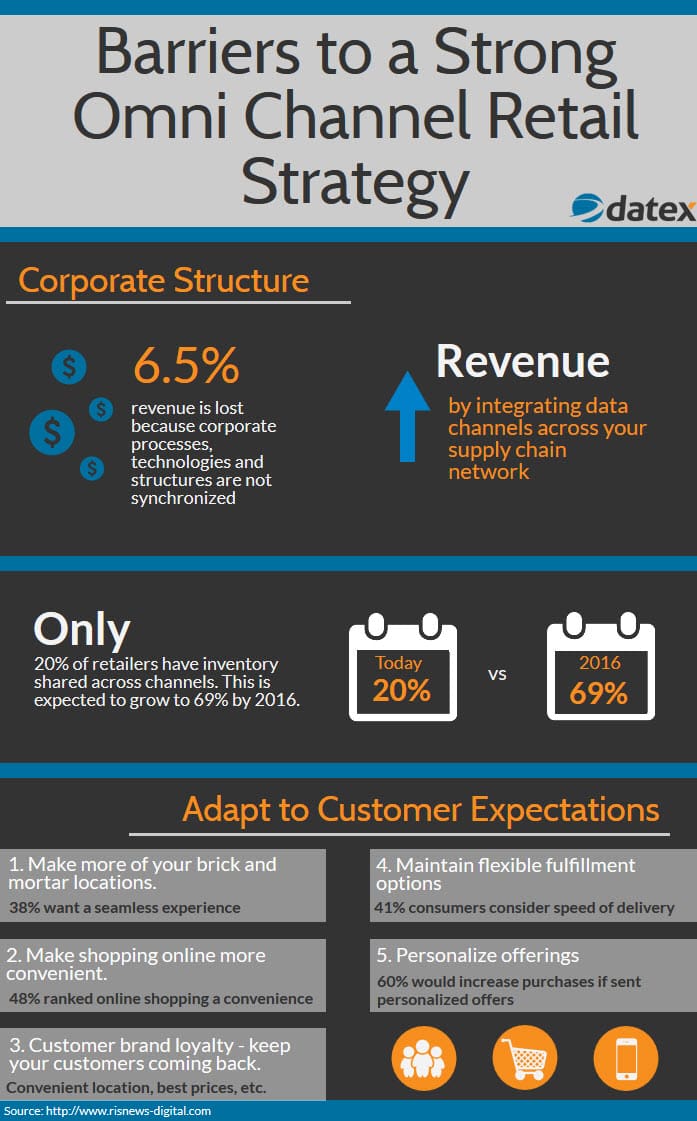As an omni channel retail strategy has become the industry standard, retailers are making significant changes in their supply chains and technology to ensure they can properly meet consumer expectations. The main aspect of omni channel retailing is the ability to integrate retail channels so that they work together to provide a fluid consumer experience regardless of what original retail channel is utilized. This is where many retailers are having issues. Six and a half percent of revenue is lost because corporate processes, technologies and structures are not synchronized. This creates a disjointed customer experience as the retail channels cannot properly work together and inventory is not represented consistently across all channels. This revenue can be regained by integrating data channels across the retail supply chain network. This is done by implementing an inventory management system such as a WMS that can handle multi – location, multiple inventory levels, individual order processing and much more. Selecting a functionally robust warehouse management system is the first step in the right direction for many retailers losing revenue due to data not being synchronized. Currently, only twenty percent of retailers share inventory across channels, but this is expected to grow to sixty nine percent by 2016. The remaining eighty percent of retailers not utilizing cross functional inventory channels in the omni channel retailing strategy are missing out on potential revenue and customer brand loyalty that keeps customers returning.
Five steps that retailers can take the adapt to customer expectations include:
- Implement more technology in brick and mortar store locations (38% of consumers want a more seamless shopping experience using mobile technology and online channels)
- Make online shopping more convenient
- Implement brand loyalty strategies to keep customers coming back
- Maintain flexible fulfillment options
- Personalize offerings based on customer data

